Abstract
1. Tonic labyrinth and neck reflexes were studied separately and in combination in the decerebrate cat with C1 and C2 spinal roots cut. Reflex effects were observed as changes in length of the isotonically loaded medial head of triceps. 2. The tonic labyrinth reflexes acted asymmetrically on the medial head of triceps. Side-down rotation of the head produced shortening in medial triceps, whereas side-up rotations of the head resulted in a lengthening. 3. The tonic neck reflexes acted asymmetrically on the medial head of triceps. Side-down rotations of the neck produced a lengthening of medial triceps, whereas side-up rotations of the neck resulted in shortening. 4. Labyrinth and neck reflexes produce opposite effects on the same limb extensor muscle so that, if the neck innervation is intact, head tilting produces no change in muscle length. 5. It is suggested that the interaction between the labyrinth and neck reflexes contributes to the stability of the trunk, allowing the head to move freely on the body without affecting this stability. Labyrinth and neck reflexes need therefore to be considered together as a single system.
Full text
PDF


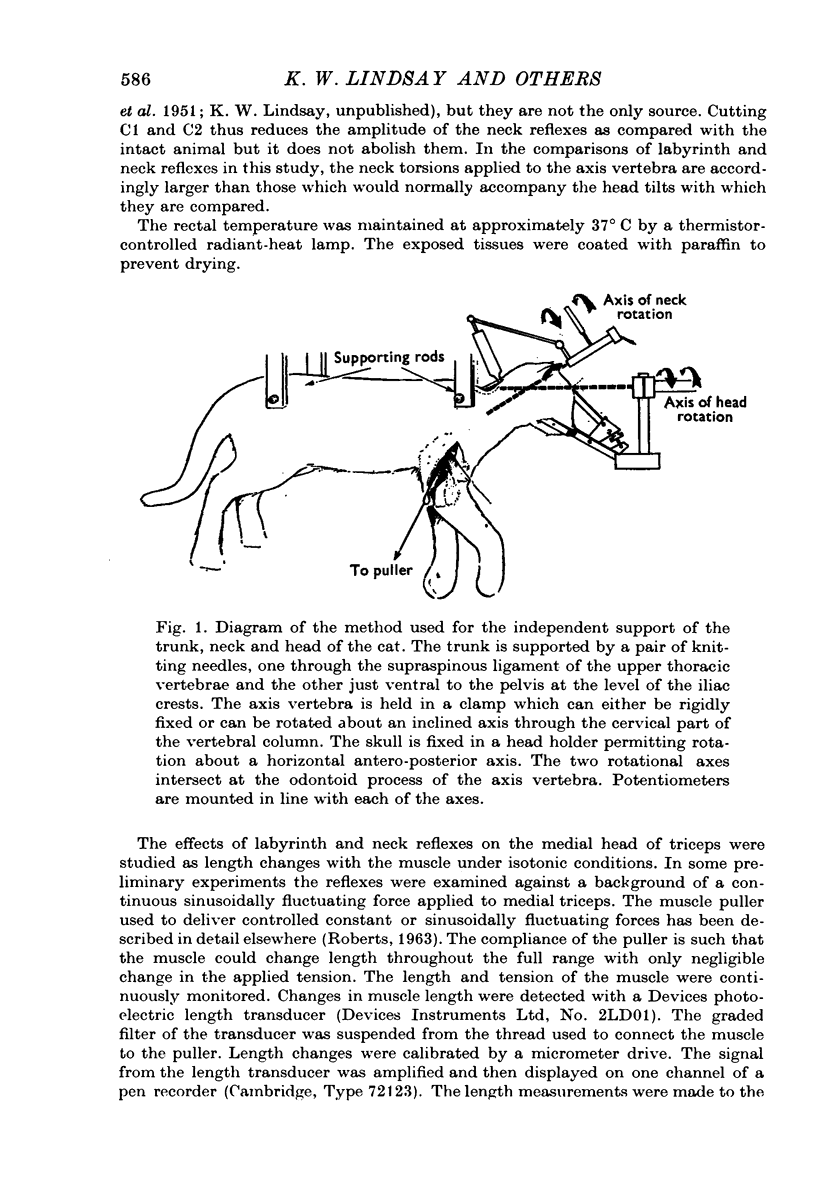
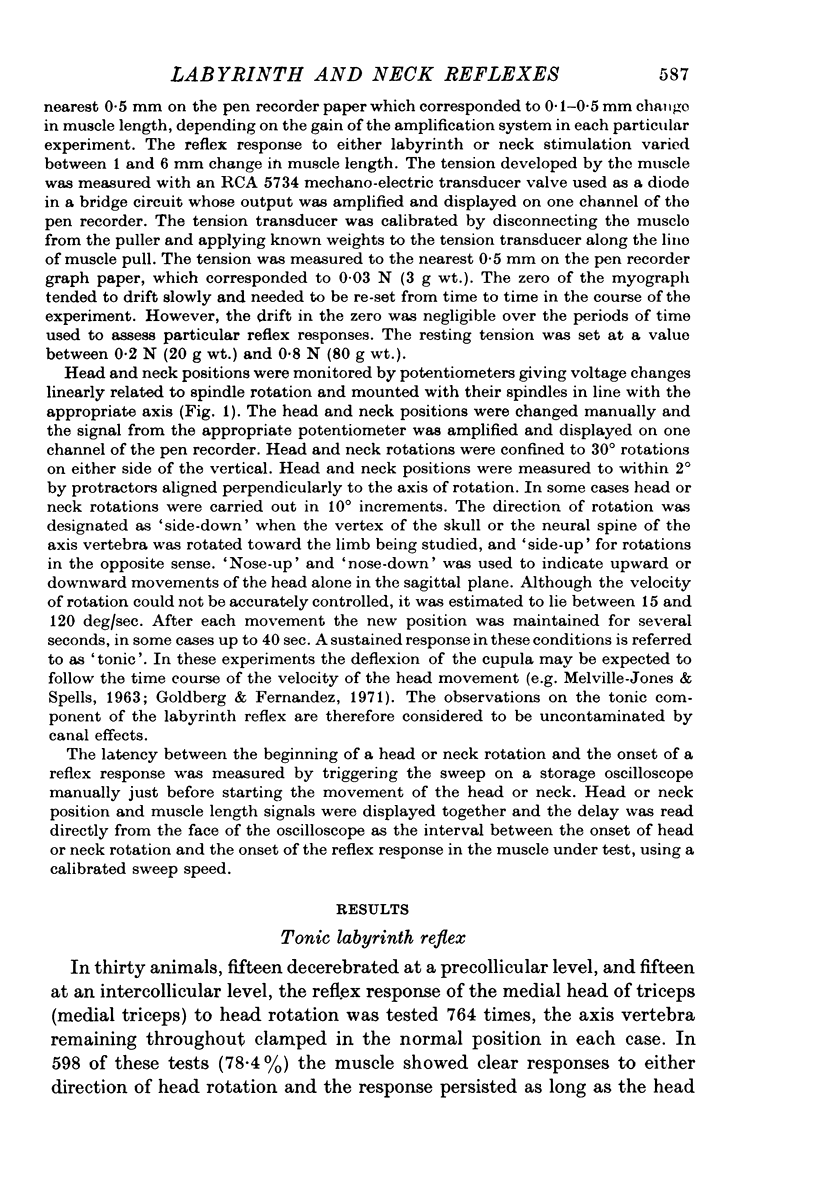
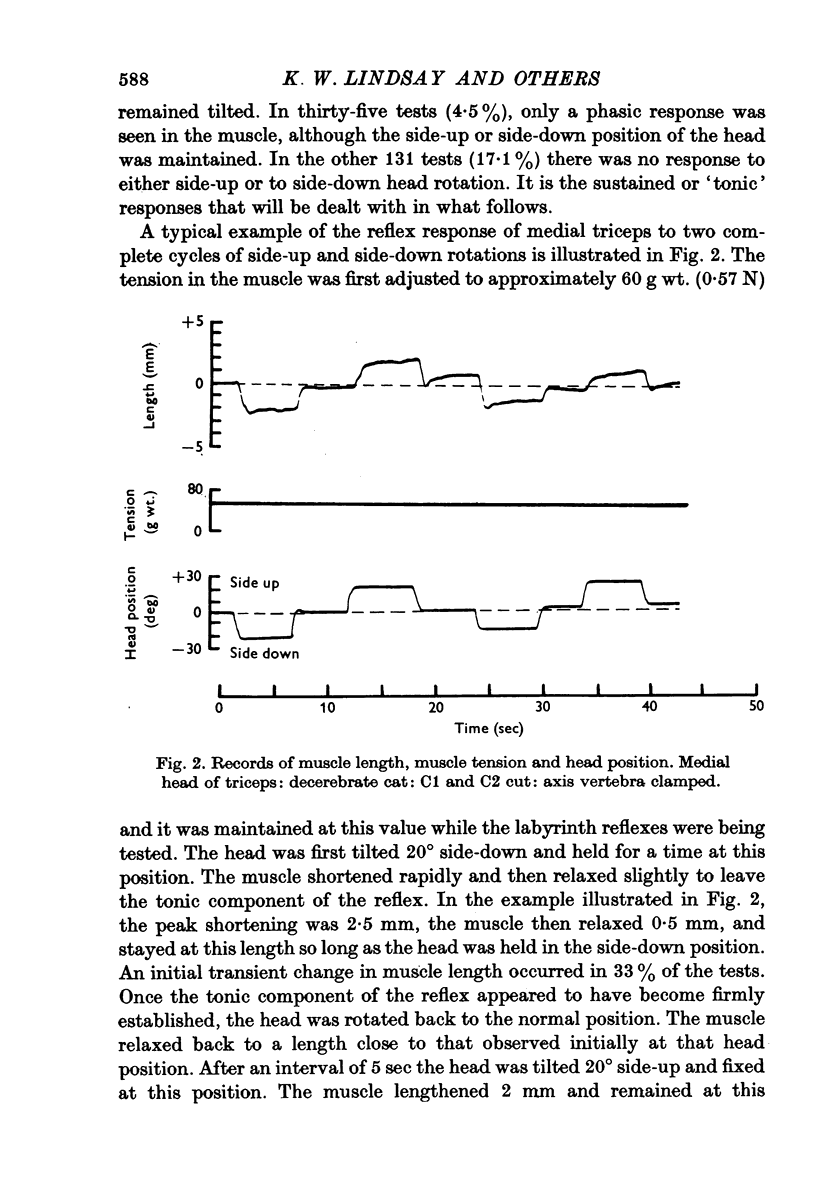
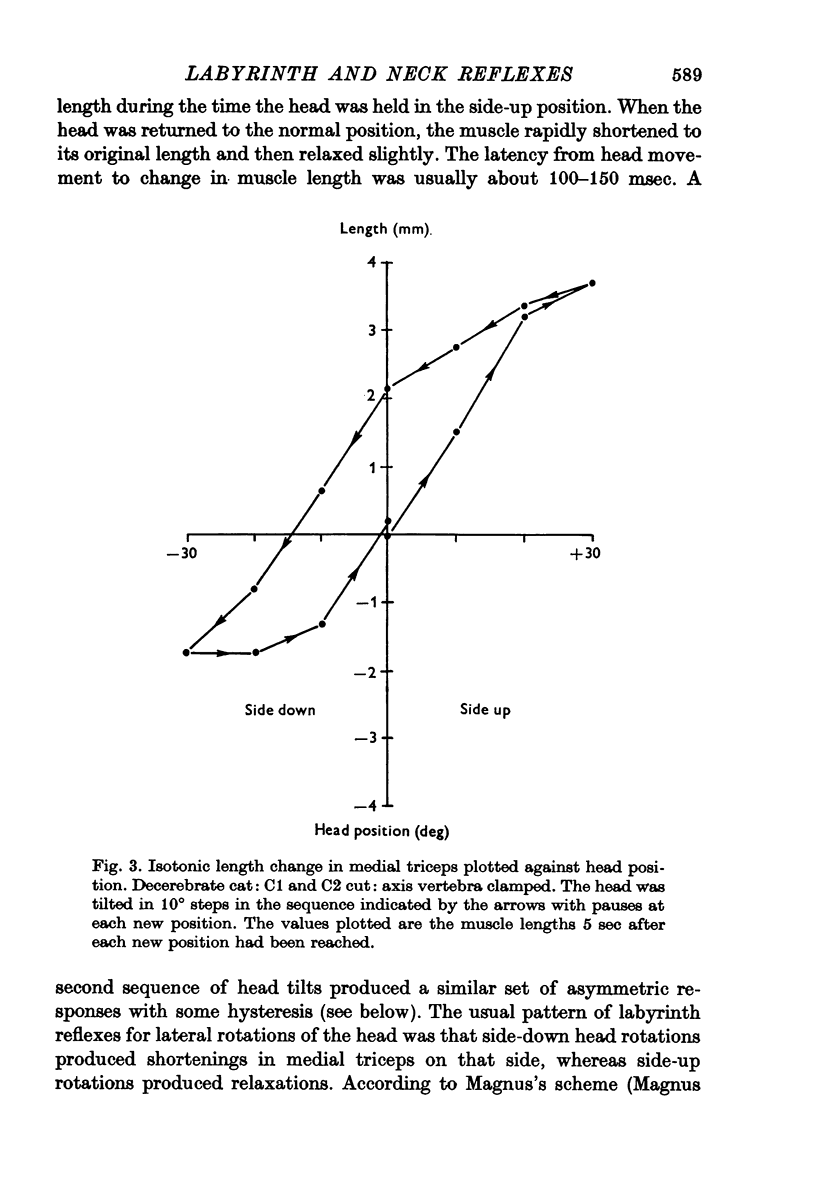
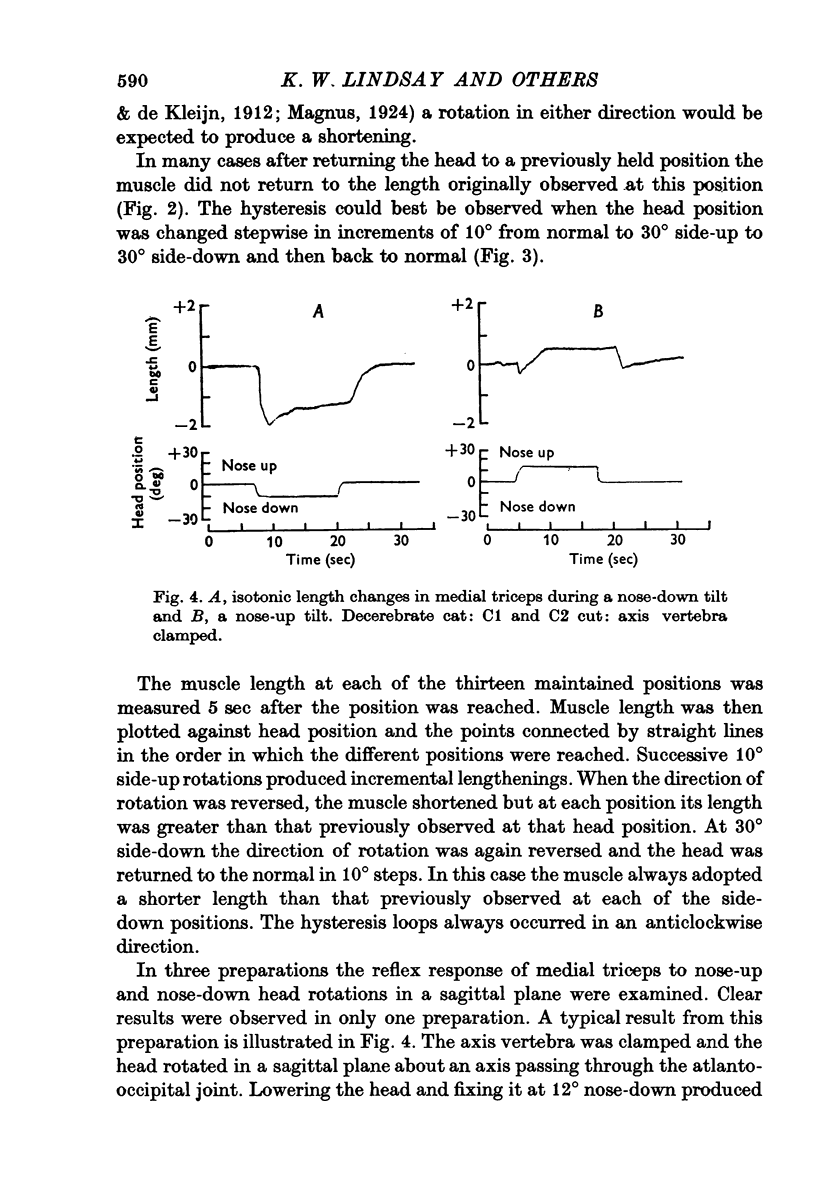

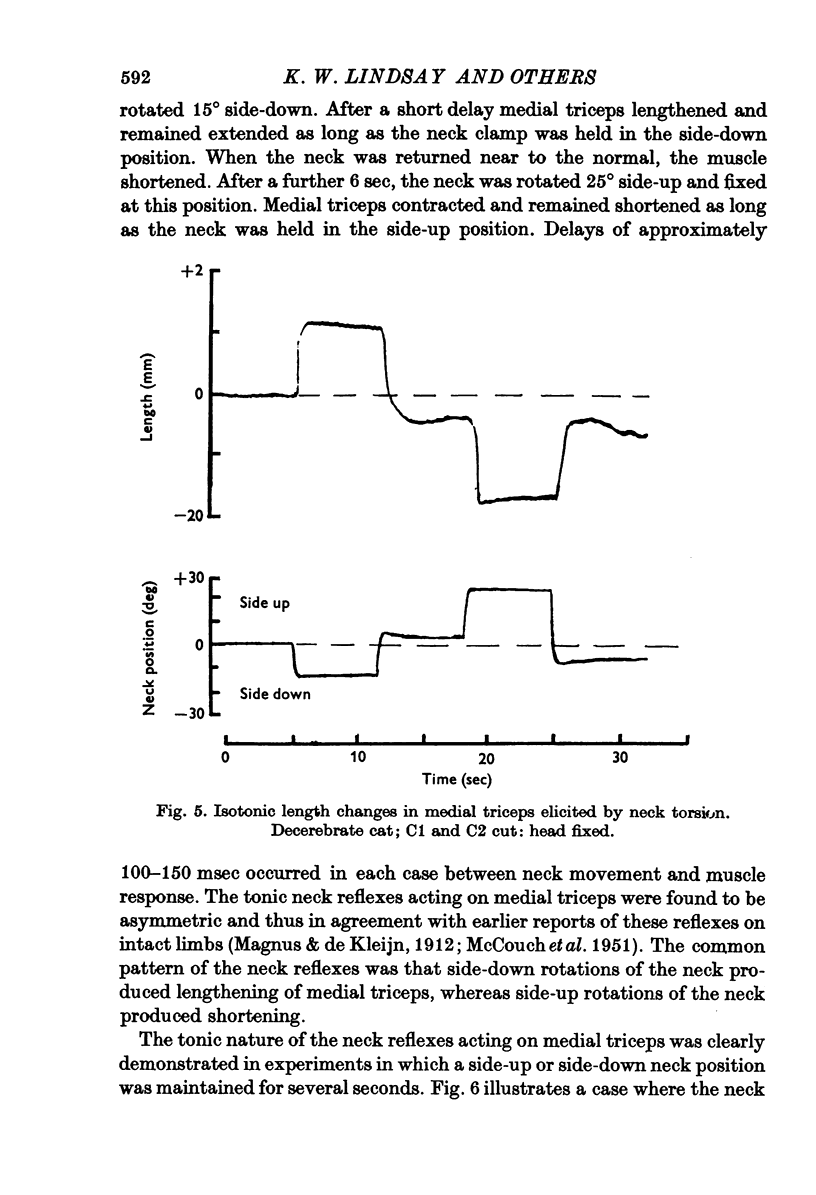
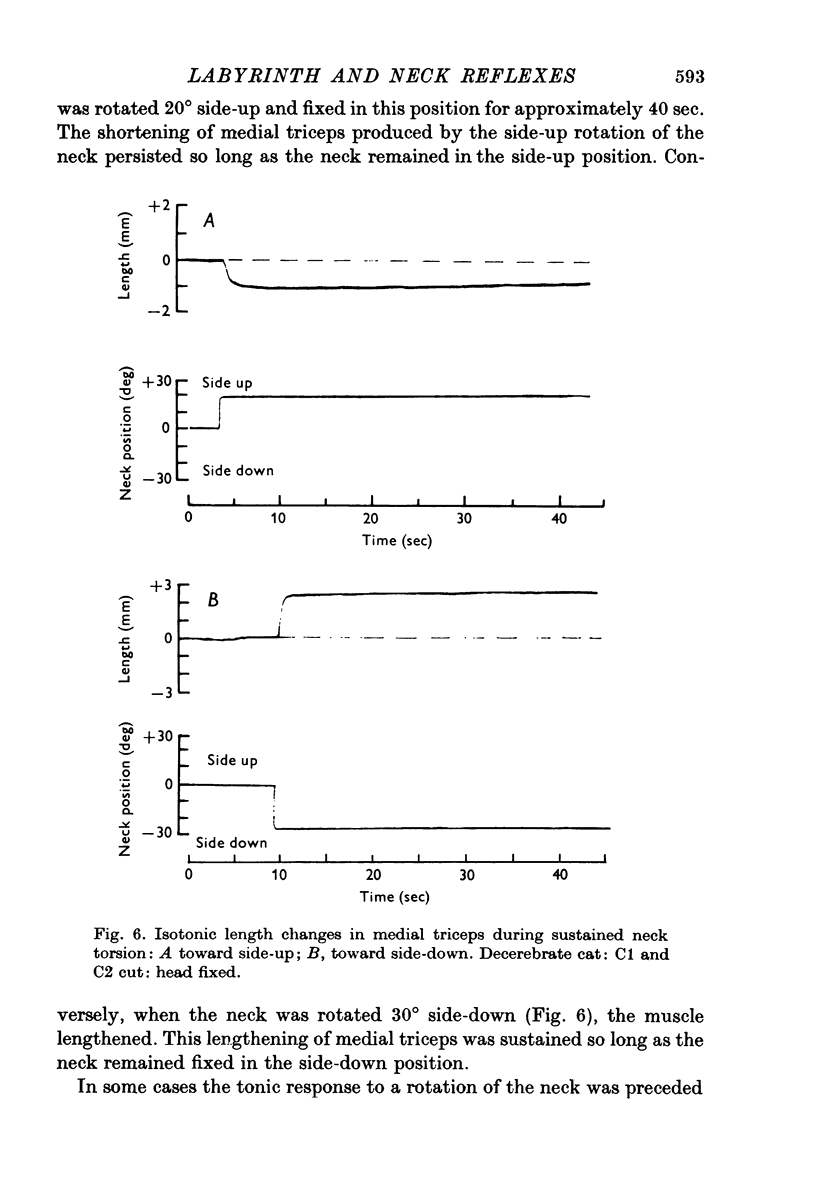
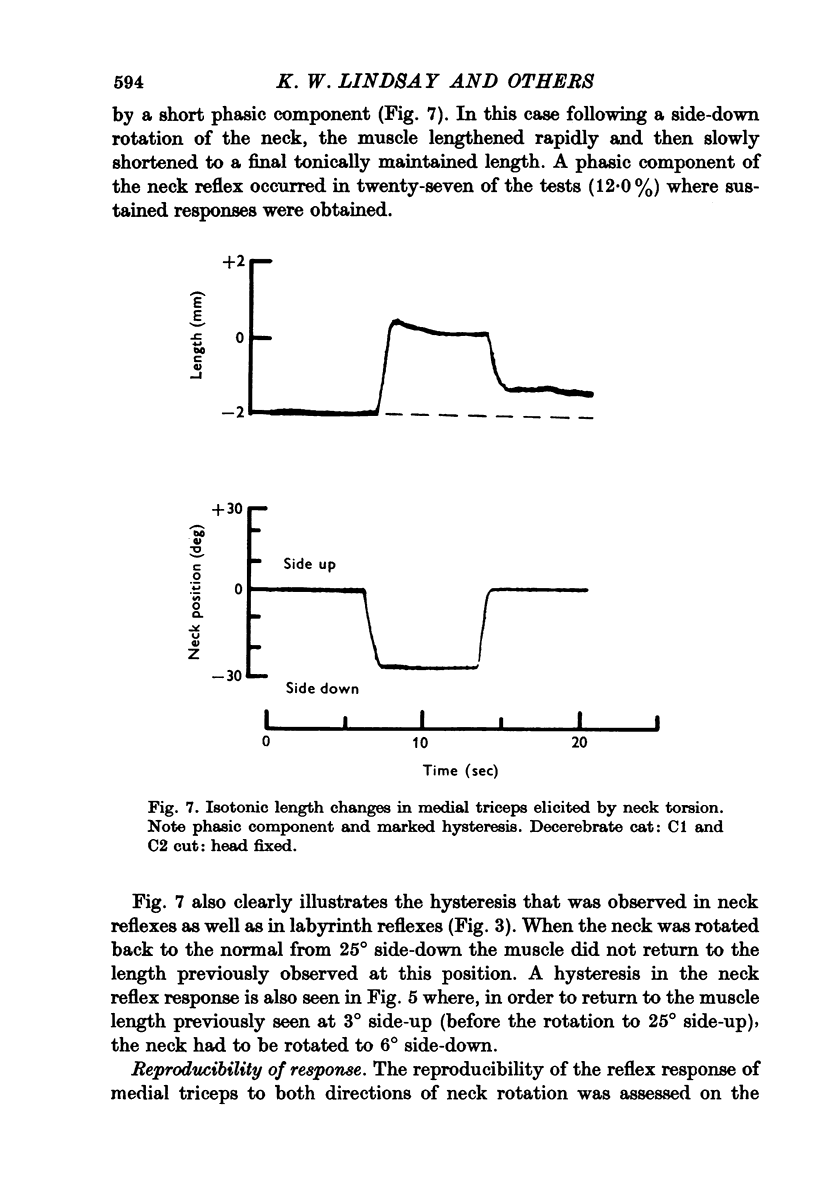

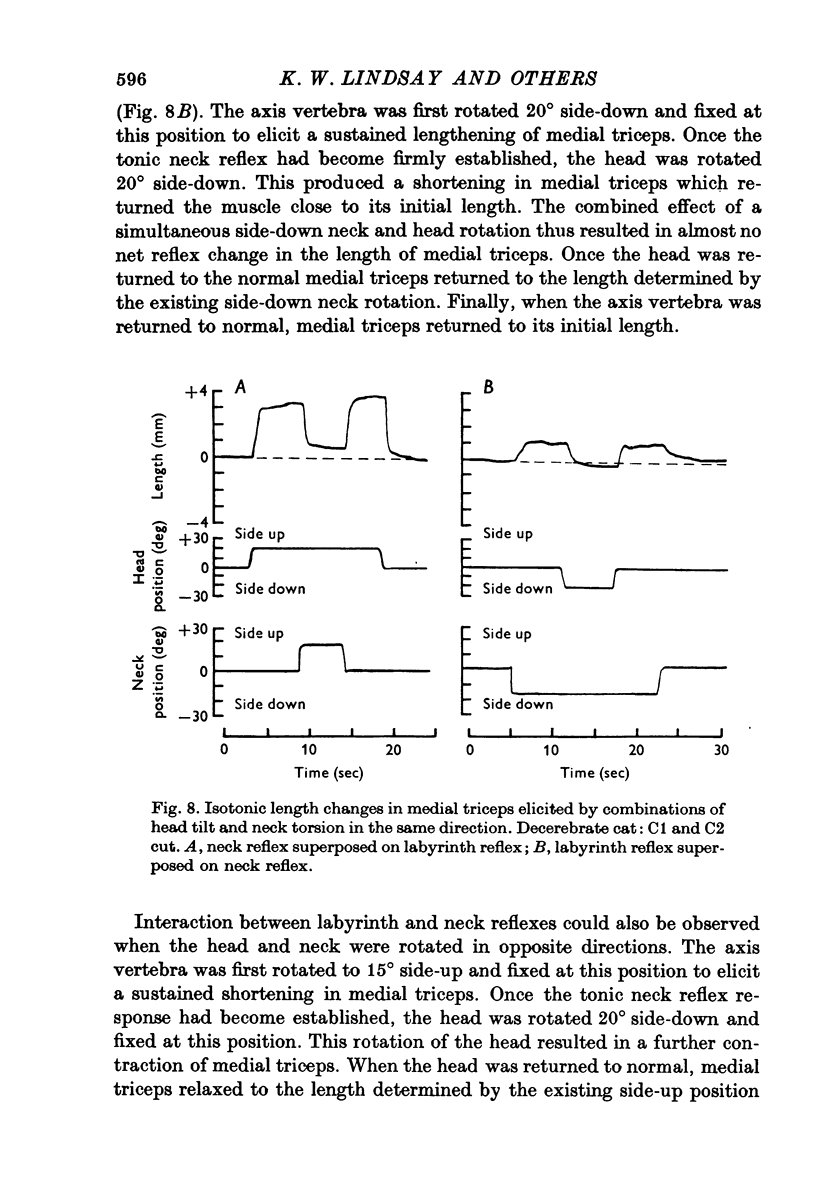
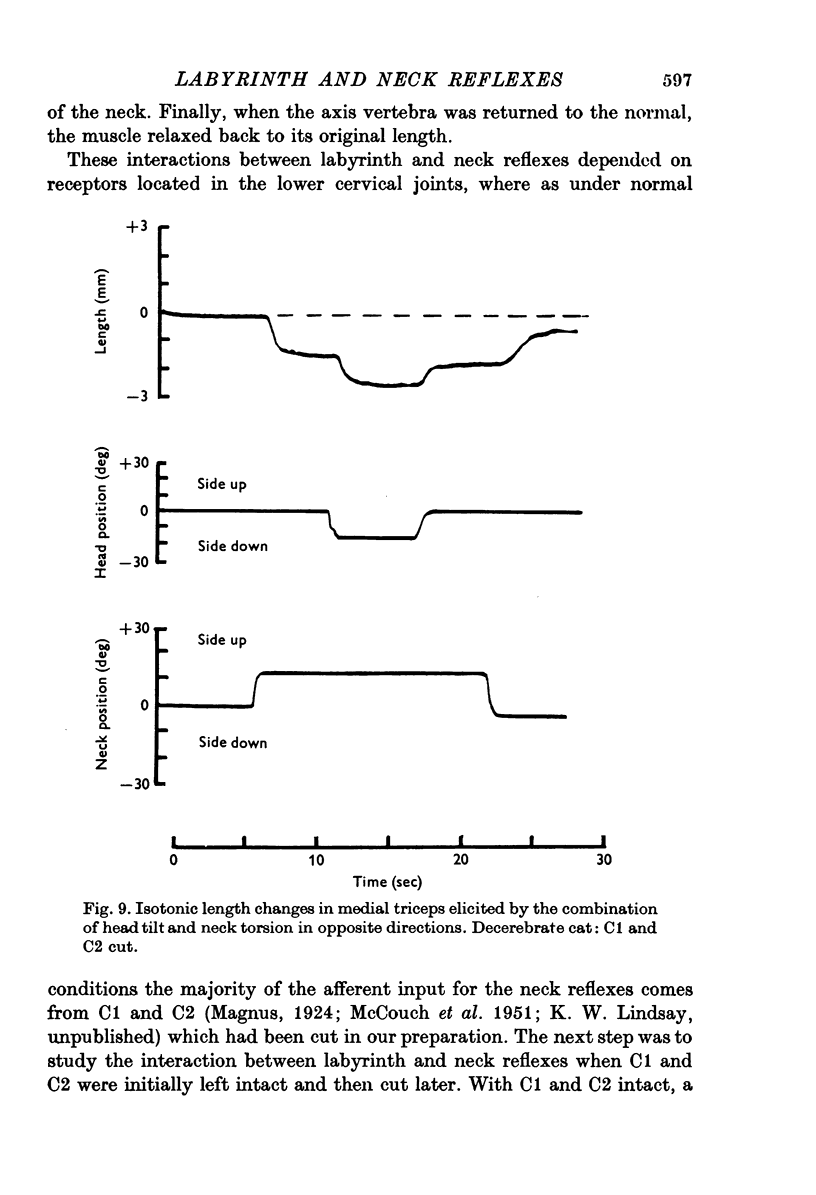
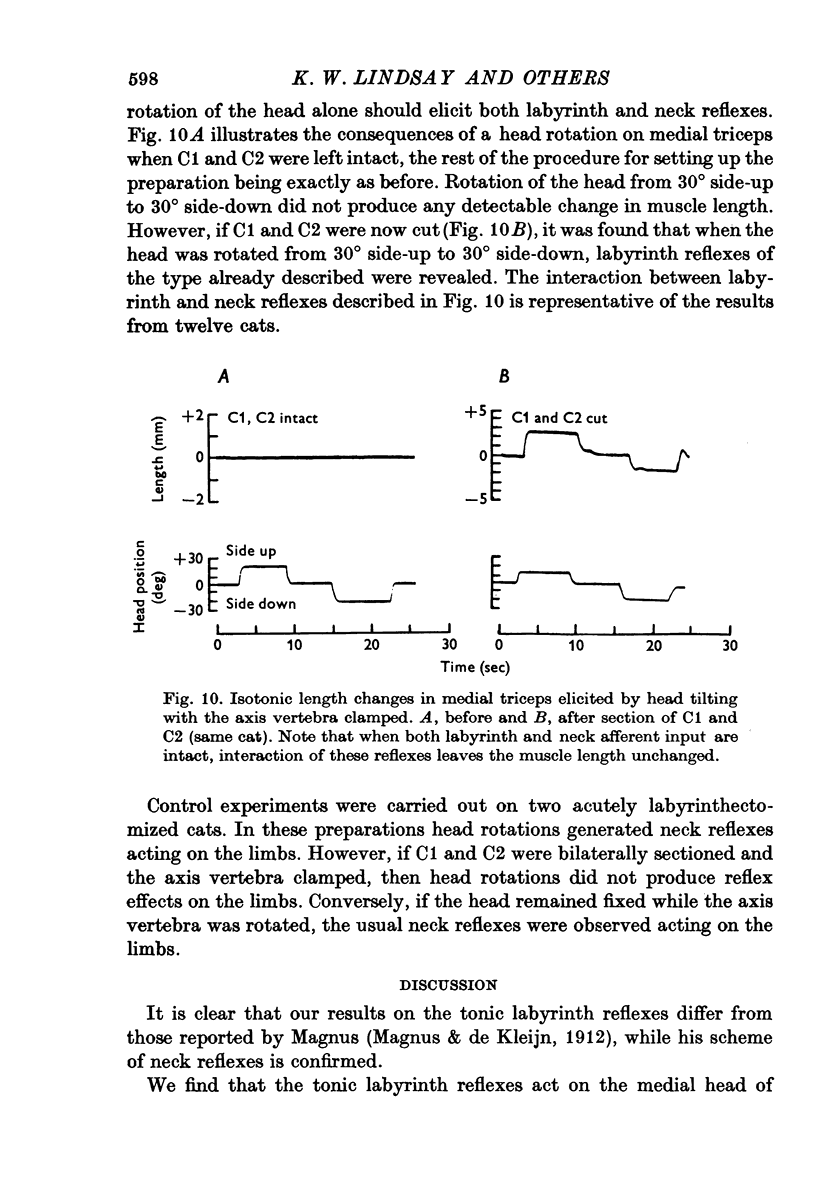
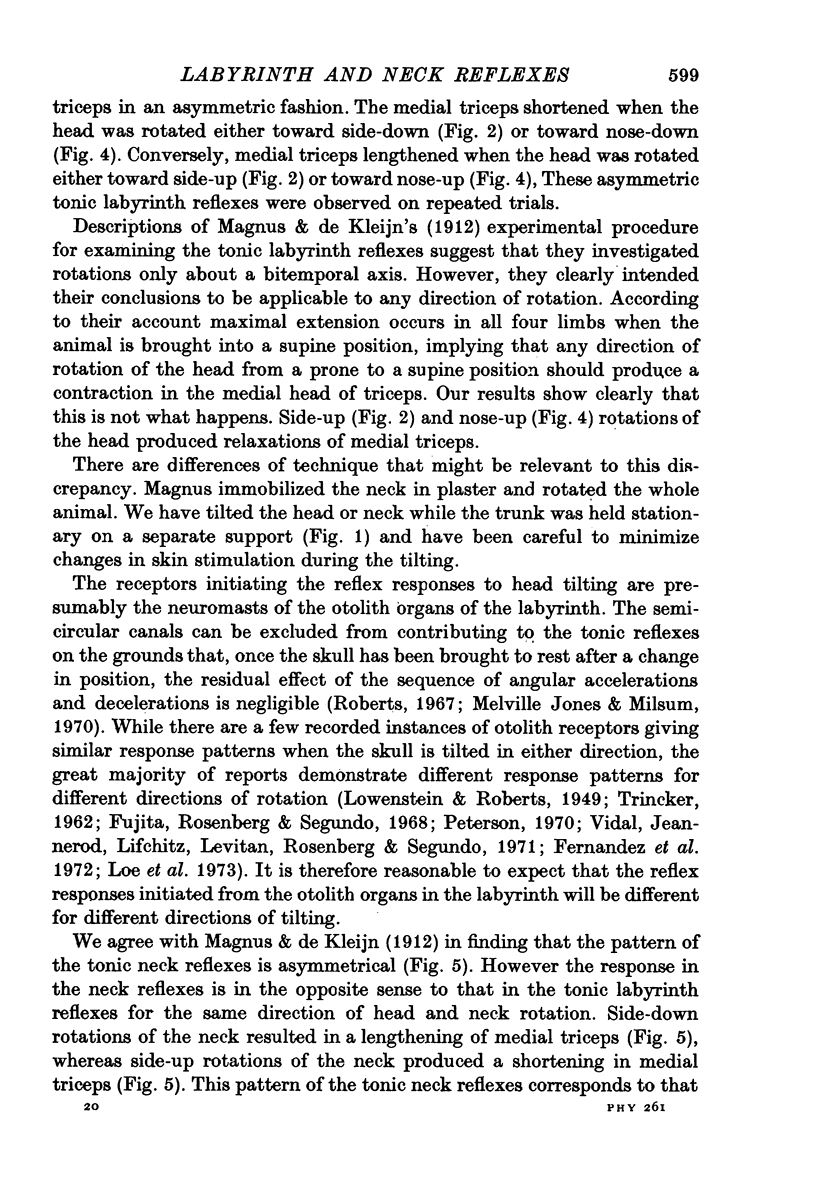
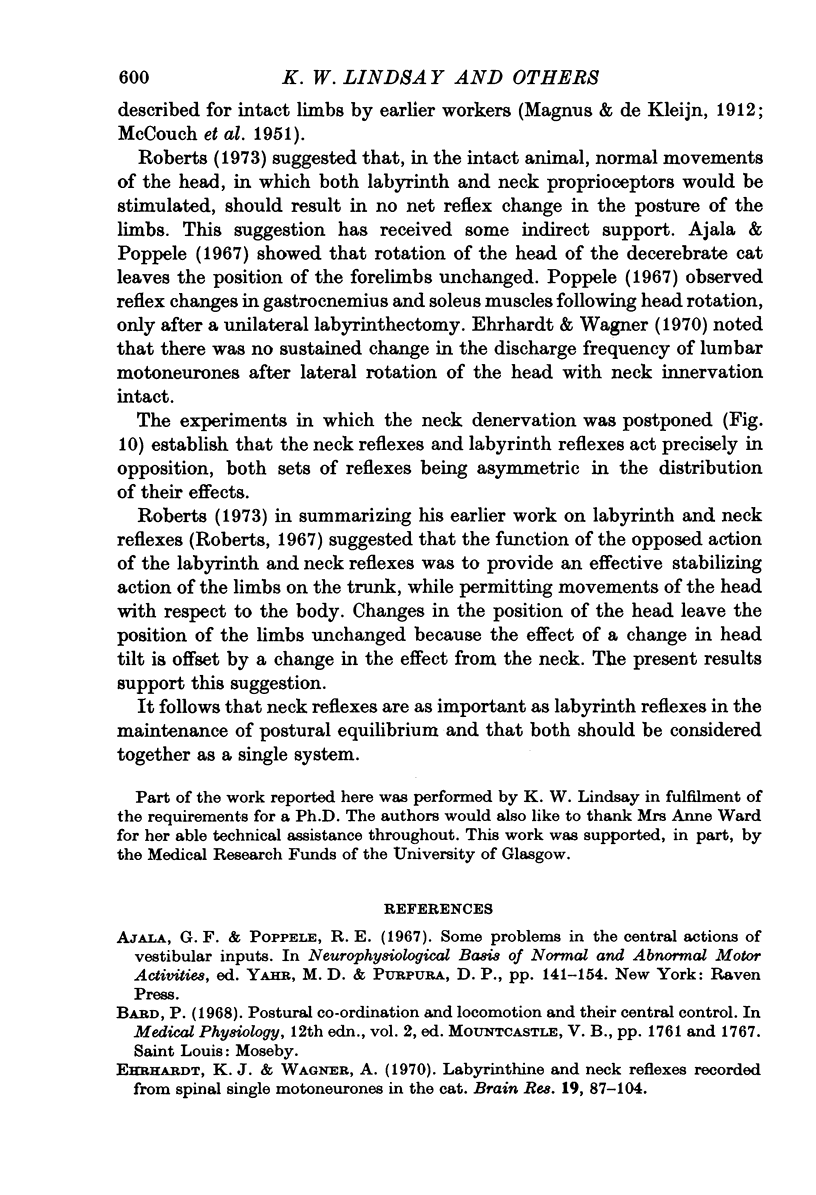
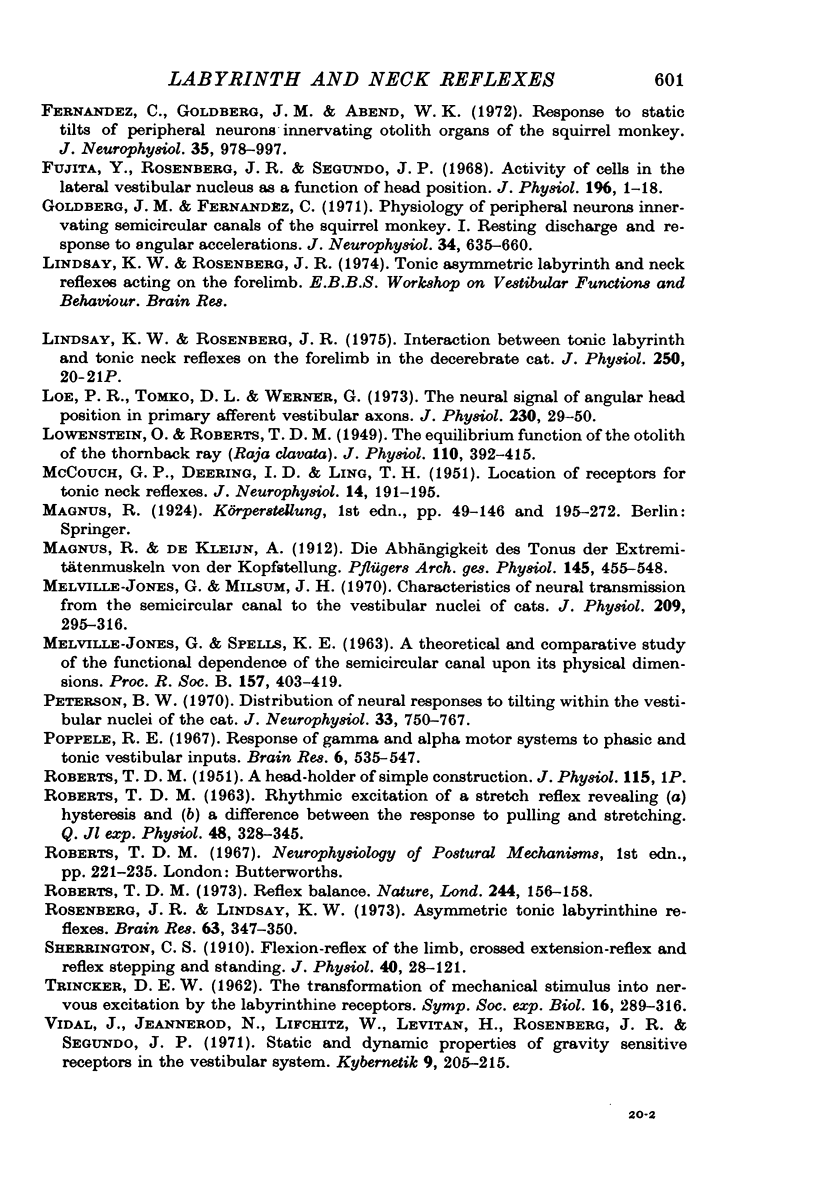
Selected References
These references are in PubMed. This may not be the complete list of references from this article.
- Ehrhardt K. J., Wagner A. Labyrinthine and neck reflexes recorded from spinal single motoneurons in the cat. Brain Res. 1970 Apr 1;19(1):87–104. doi: 10.1016/0006-8993(70)90239-8. [DOI] [PubMed] [Google Scholar]
- Fernandez C., Goldberg J. M., Abend W. K. Response to static tilts of peripheral neurons innervating otolith organs of the squirrel monkey. J Neurophysiol. 1972 Nov;35(6):978–987. doi: 10.1152/jn.1972.35.6.978. [DOI] [PubMed] [Google Scholar]
- Fujita Y., Rosenberg J., Segundo J. P. Activity of cells in the lateral vestibular nucleus as a function of head position. J Physiol. 1968 May;196(1):1–18. doi: 10.1113/jphysiol.1968.sp008490. [DOI] [PMC free article] [PubMed] [Google Scholar]
- Goldberg J. M., Fernandez C. Physiology of peripheral neurons innervating semicircular canals of the squirrel monkey. I. Resting discharge and response to constant angular accelerations. J Neurophysiol. 1971 Jul;34(4):635–660. doi: 10.1152/jn.1971.34.4.635. [DOI] [PubMed] [Google Scholar]
- JONES G. M., SPELLS K. E. A theoretical and comparative study of the functional dependence of the semicircular canal upon its physical dimensions. Proc R Soc Lond B Biol Sci. 1963 Mar 26;157:403–419. doi: 10.1098/rspb.1963.0019. [DOI] [PubMed] [Google Scholar]
- Jones G. M., Milsum J. H. Characteristics of neural transmission from the semicircular canal to the vestibular nuclei of cats. J Physiol. 1970 Aug;209(2):295–316. doi: 10.1113/jphysiol.1970.sp009166. [DOI] [PMC free article] [PubMed] [Google Scholar]
- LOWENSTEIN O., ROBERTS T. D. M. The equilibrium function of the otolith organs of the thornback ray (Raja clavata). J Physiol. 1949 Dec;110(3-4):392–415. doi: 10.1113/jphysiol.1949.sp004448. [DOI] [PMC free article] [PubMed] [Google Scholar]
- Lindsay K. W., Rosenberg J. R. Proceedings: Interaction between tonic labyrinth and tonic neck reflexes on the forelimb in the decerebrate cat. J Physiol. 1975 Aug;250(1):20P–21P. [PubMed] [Google Scholar]
- Loe P. R., Tomko D. L., Werner G. The neural signal of angular head position in primary afferent vestibular nerve axons. J Physiol. 1973 Apr;230(1):29–50. doi: 10.1113/jphysiol.1973.sp010173. [DOI] [PMC free article] [PubMed] [Google Scholar]
- McCOUCH G. P., DEERING I. D., LING T. H. Location of receptors for tonic neck reflexes. J Neurophysiol. 1951 May;14(2):191–195. doi: 10.1152/jn.1951.14.3.191. [DOI] [PubMed] [Google Scholar]
- Peterson B. W. Distribution of neural responses to tilting within vestibular nuclei of the cat. J Neurophysiol. 1970 Nov;33(6):750–767. doi: 10.1152/jn.1970.33.6.750. [DOI] [PubMed] [Google Scholar]
- Poppele R. E. Response of gamma and alpha motor systems to phasic and tonic vestibular inputs. Brain Res. 1967 Nov;6(3):535–547. doi: 10.1016/0006-8993(67)90064-9. [DOI] [PubMed] [Google Scholar]
- ROBERTS T. D. M. A head-holder of simple construction. J Physiol. 1951 Sep;115(1):1p–1p. [PMC free article] [PubMed] [Google Scholar]
- ROBERTS T. D. RHYTHMIC EXCITATION OF A STRETCH REFLEX, REVEALING (A) HYSTERESIS AND (B) A DIFFERENCE BETWEEN THE RESPONSES TO PULLING AND TO STRETCHING. Q J Exp Physiol Cogn Med Sci. 1963 Oct;48:328–345. doi: 10.1113/expphysiol.1963.sp001676. [DOI] [PubMed] [Google Scholar]
- Roberts T. D. Reflex balance. Nature. 1973 Jul 20;244(5412):156–158. doi: 10.1038/244156a0. [DOI] [PubMed] [Google Scholar]
- Rosenberg J. R., Lindsay K. W. Asymmetric tonic labyrinthine reflexes. Brain Res. 1973 Dec 7;63:347–350. doi: 10.1016/0006-8993(73)90102-9. [DOI] [PubMed] [Google Scholar]
- Sherrington C. S. Flexion-reflex of the limb, crossed extension-reflex, and reflex stepping and standing. J Physiol. 1910 Apr 26;40(1-2):28–121. doi: 10.1113/jphysiol.1910.sp001362. [DOI] [PMC free article] [PubMed] [Google Scholar]
- Vidal J., Jeannerod M., Lifschitz W., Levitan H., Rosenberg J., Segundo J. P. Static and dynamic properties of gravity-sensitive receptors in the cat vestibular system. Kybernetik. 1971 Dec;9(6):205–215. doi: 10.1007/BF00289582. [DOI] [PubMed] [Google Scholar]


